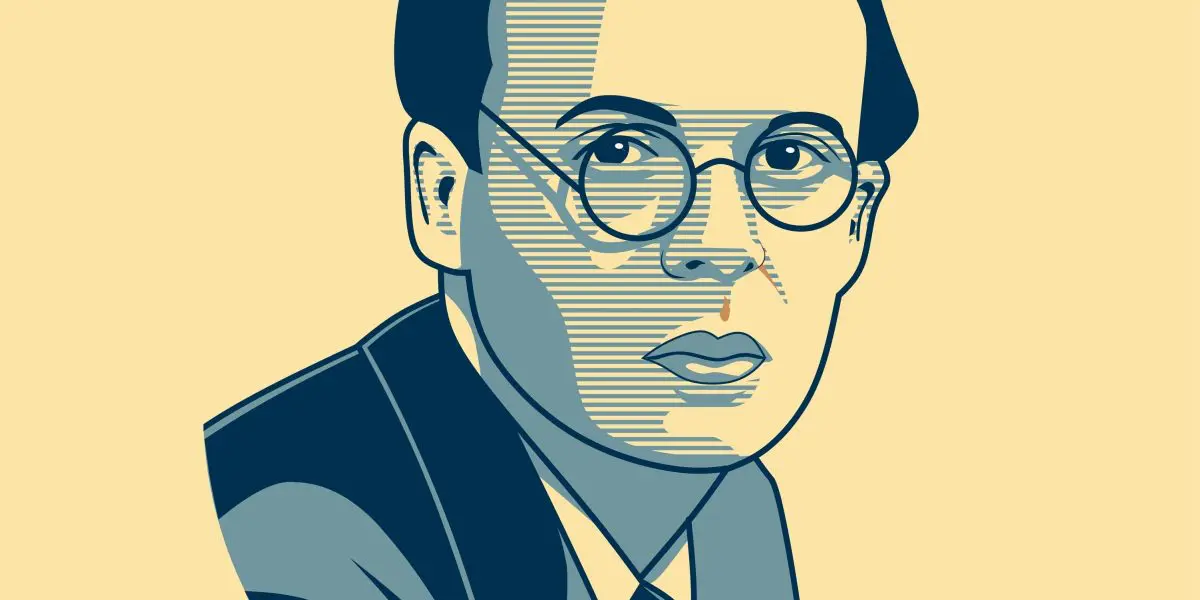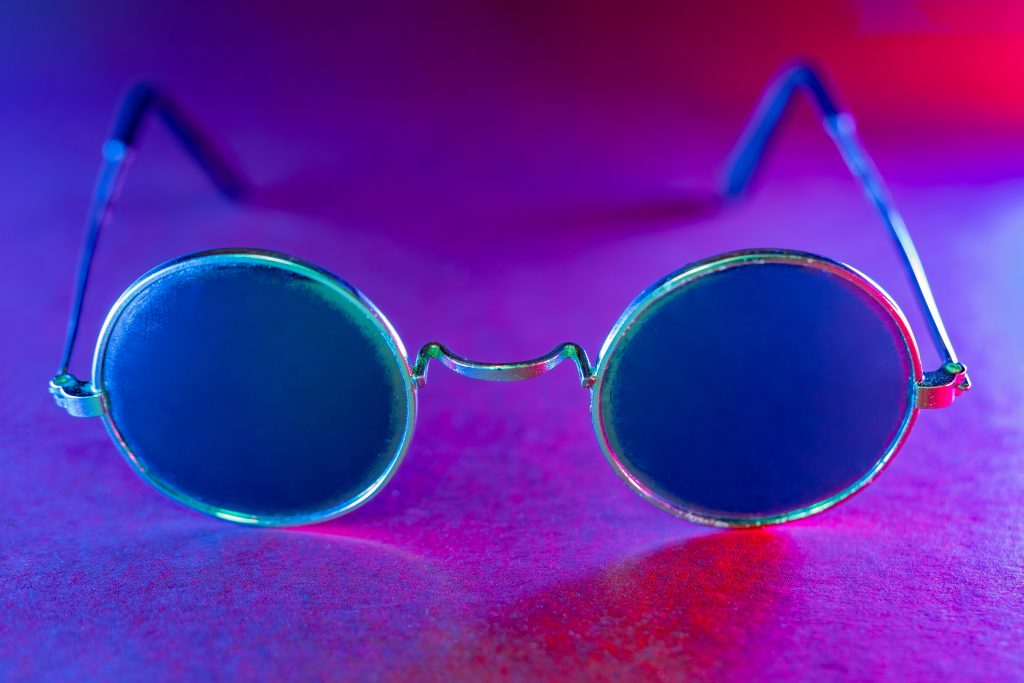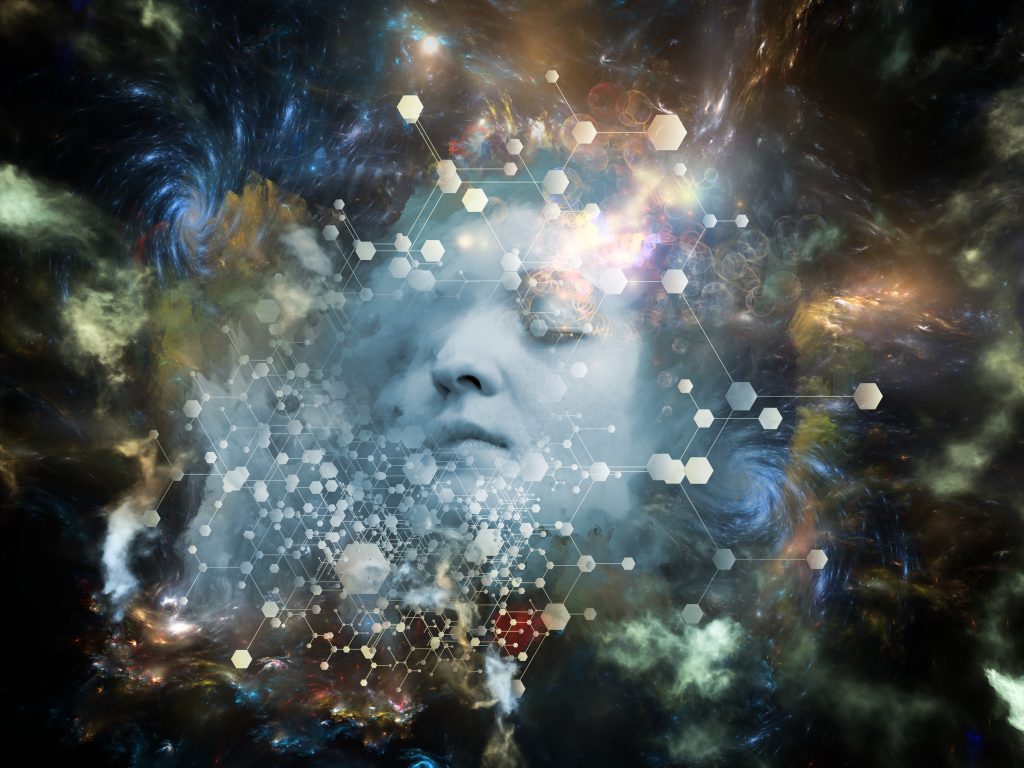
in this article
- Introduction
- Huxley’s Poor Vision
- Was Huxley Using The Doors of Perception to Prove a Point?
- The Western Obsession with Psychedelic Visuals
Are you 18 or older?
Please confirm that your are 18 years of age or older.
You are not allowed to access the page.

Disclaimer: The views and opinions expressed in this article are those of the authors and do not necessarily reflect the official policy or position of the Chemical Collective or any associated parties.
The Doors of Perception (1954) by Aldous Huxley contains probably the most well-known and influential trip report ever written. The Doors took their name from the title of the book. And many who read Huxley’s engrossing description of his mescaline experience would become inspired to embark on their own psychedelic journeys.
What stands out in particular about this work – which is part trip report and part philosophical text – are the visual descriptions of the psychedelic experience. These are rich, vivid, poetic, and imbued with awe-inspiring emotion. For example, Huxley refers to “a bunch of flowers shining with their own inner light”. But it was not only natural objects transformed into untold sights of beauty. He writes: “Those folds in the trousers – what a labyrinth of endlessly significant complexity! And the texture of the gray flannel – how rich, how deeply, mysteriously sumptuous!”
Elsewhere, Huxley spends a great deal of attention on the colours and textures of objects, such as a vase of flowers and works of art. The mystical and sublime aspect of the psychedelic experience is emphasised too: “I was seeing what Adam had seen on the morning of his creation – the miracle, moment by moment, of naked existence.” However, there is no getting around the fact that Huxley tried to describe the visual effects in as much detail as possible.
There might not seem anything particularly surprising about this. The visual effects of psychedelics are often the most striking aspect of the experience. And if you had never taken psychedelics before (as in the case of Huxley), then seeing the world transform so radically is, understandably, going to be the kind of novelty that captures your interest and attention. Moreover, we should keep in mind that Huxley was a novelist, so he was already used to focusing on visual descriptions of scenes and depicting scenes poetically and impressively.
Nonetheless, there has been some speculation that Huxley might have had another motive for focusing on the visual effects and describing them as vividly as he did. This relates to his poor eyesight, which he had long lived with.

In 1911, while studying at Eton, Huxley was suffering from keratitis, which left him blind for several years. His vision improved enough for him to study at Oxford, although he needed thick glasses and a magnifying glass. His vision then deteriorated over the next 20 years or so.
In 1939, in a state of desperation, Huxley was persuaded to pursue the Bates method, a controversial, ineffective, and potentially dangerous alternative therapy aimed at improving eyesight. It was born out of eyecare physician William Horatio Bates’ erroneous belief that eyeglasses shouldn’t be worn. He argued eyesight could be improved, alternatively, through relaxation techniques. The dangerous aspect of the Bates method came from the following recommendations: overexposing the eyes to sunlight, not wearing glasses when people need to (e.g. when driving), and neglecting conventional eyecare (which may lead to serious conditions developing).
Nonetheless, in The Art of Seeing: An Adventure in Re-education (1942) – detailing Huxley’s experience with and views on the debunked Bates method – the author claims: “Within a couple of months I was reading without spectacles and, what was better still, without strain and fatigue … At the present time, my vision, though very far from normal, is about twice as good as it used to be when I wore spectacles.”
However, despite accepting Huxley’s claim of improvement to his eyesight, the book was criticised for promoting a pseudoscientific theory and method. The Scottish ophthalmologist Stewart Duke-Elder wrote:
Whatever be the value of the exercises, it is quite unintelligent of Huxley to have confused their advocacy with so many misstatements regarding known scientific facts. It has been shown that the hypothesis upon which these methods of treatment are based is wrong; but Huxley, while admitting he is ignorant of the matter and unqualified to speak, contends that this is of no importance because the method works in practice and gives good results: it comes into the category of “art” not of “science.”
He adds:
It is hardly possible that it will impress anyone endowed with common sense and a critical faculty. It may be dangerous in the hands of the impressionable who happen to suffer from glaucoma or detachment of the retina.
New York optometrist Philip Pollack also drew attention to the unscientific nature of the book: “Bates wrote of relaxation but Huxley brings in transcendentalism. Tension and poor vision are caused by the refusal of the individual ego to surrender to Nature.” As with many other claims related to the efficacy of alternative therapies, Huxley’s vision may have improved on its own over time, just as other conditions change in cycles. On the other hand, others doubted whether he could see well at all. The American writer Bennett Cerf was present when Huxley was speaking at a banquet in Hollywood; he wasn’t wearing glasses and appeared to be reading a paper from the lectern with no difficulty. But Cerf recounts:
Then suddenly he faltered—and the disturbing truth became obvious. He wasn’t reading his address at all. He had learned it by heart. To refresh his memory he brought the paper closer and closer to his eyes. When it was only an inch or so away he still couldn’t read it, and had to fish for a magnifying glass in his pocket to make the typing visible to him. It was an agonising moment.
In a piece for The Guardian, Sam Jordison notes that while Huxley admitted that he still needed a magnifying glass, the issue around his eyesight and the critiques of his book The Art of Seeing add “an edge to the writer’s enthusiastic artistic criticism in The Doors Of Perception.” Jordison goes on to state:
Was he protesting too much? Alternatively, was his delight and concern for the visual world all the more heightened because he had fought so hard to retain his sight – and knew what it means to lose it. Given that The Art Of Seeing had aroused such anger and doubt, was he perhaps using the Doors Of Perception as a way to answer his critics? Is it possible that Huxley’s subconscious was operating in ways he didn’t care to acknowledge?
He admits this is “in the realm of speculation”, but it is nonetheless an interesting possibility to consider. Huxley’s damaged eyesight, and the emphasis on the visual in The Doors of Perception, do throw into question just how visual his mescaline experience would have been. (Mescaline, at least at the dose Huxley took – 400 mg of mescaline sulfate – is not known to be as visually impressive and intense as psilocybin or LSD, but that’s a separate point.)
Jordison adds:
Huxley wouldn’t be entirely delighted at the suggestion the book is somehow about his eye trouble. For him, it was all about mescaline. The message was the drug and its astonishing potential. It marked (forgive me) the high point in a lifelong obsession.
Indeed, Huxley’s interest in mind-altering drugs was revealed in Brave New World (1932), which describes a world in which citizens of the future consume Soma, a hallucinogenic drug that offers people ‘a holiday’ from reality. When Huxley decided to take mescaline, he was convinced it would be an insightful experience, rather than an escapist one (like the Soma experience). The Doors of Perception reveals how the psychedelic experience exceeded his expectations. (After Huxley later tried LSD, and continued to use it, he claimed this psychedelic allowed him to access even more profound states of mind.)
While we’ll never know if Huxley was using The Doors of Perception to prove a point about his vision, Jordison’s speculations do highlight an underappreciated aspect of trip reports. Many trip reports – especially when they enter the public domain, and have the potential to be seen by many readers – can be influenced (partly) by motives to ‘prove a point’. This point may be to communicate how spiritual and moving the experience was; or it could be, in the case of Huxley perhaps, to show readers that one’s sensory faculties are in working order.

Another possibility is that Huxley’s focus on the visual component of the psychedelic experience is related to a Western bias towards the visual. The writer Jules Evans describes how when Westerners first started experimenting with psychedelics – for their spiritual, aesthetic, or medical benefits – the visual aspect was often emphasised. He states:
“In 1895, the first scientific trial of a psychedelic took place in Columbian University, when an unidentified ‘chemist’ swallowed five buttons from the peyote cactus. He wrote: ‘Then followed a train of delightful visions such as no human ever enjoyed under normal conditions.’ The only thing he could compare it to was seeing the electric lights shimmering in the Chicago World Fair.
This proved to be typical of westerners’ experience of peyote (or of the drug, mescaline, which was identified and extracted in 1919). It often gave rise to strong visions — the British psychologist Havelock Ellis, who tried it and published his experience in the Lancet in 1897, described it as an ‘orgy of vision’. When westerners reached for parallels for their new vision, they often compared it to the shimmering electric and neon of the modern city. The symbolist poet JA Symons, who was given peyote by Havelock Ellis, wandered down the South Bank and found himself ‘absolutely fascinated by an advertisement of Bovril, which came and went in letters of light’. Huxley likewise, in his famous first trip, ends up in the World’s Biggest Drug Store in LA, gazing at rows of shiny magazines.
This in itself is different to American Indians’ experiences in peyote cults, according to [Mike] Jay. They tend not to pay much attention to any visions that arise and to focus instead on the insights they receive.”
The Doors of Perception does not solely focus on the visual, as already noted; spiritual effects and philosophical insights receive a great deal of attention as well. However, Huxley, like other early Western experimenters, did seem to prioritise the visual effects. Mike Jay – a historian and psychedelic writer – argues the visual aspect does not receive the same kind of attention in Indigenous accounts of psychedelic journeys. So perhaps The Doors of Perception reflects – and went on to further amplify – the Western focus on the impressive visual displays elicited by psychedelics.
This bias towards visual effects persists to this day among psychonauts. If the visual effects (with eyes open or closed) aren’t striking or mindblowing, then the experience can feel disappointing, as if one didn’t take enough. If there is no fireworks display of exploding kaleidoscopes and intricate fractals, then it might feel like one is missing out. But might this reflect a cultural bias – influenced by modernity and technology – towards stimulation, entertainment, colours, and bright lights? This does not mean the bias is a negative one, however. The bias towards the visual can be beneficial; a fascination with the aesthetic dimension of psychedelics – which can also be influenced by interests in art – can enhance one’s aesthetic life. Visual effects can inspire us to create artwork as well as heighten our openness and aesthetic sensitivity, allowing us to appreciate art, architecture, and film in new ways. Furthermore, psychedelic visions may be imbued with meaning and significance, leading to personal insights and positive changes in one’s life.
Nevertheless, focusing too much on the visual aspect of psychedelics may lead users to deprioritise other aspects, such as the attitudinal, emotional, and relational. Cultural assumptions can influence psychedelic trips: if you go into an experience expecting or wanting visual effects, because that’s part of a cultural narrative surrounding psychedelics, then the trip and its value can become centred on the visual aspect. This is not to say that other effects – such as insights – won’t occur. But our intentions and preparedness still, nonetheless, affect the quality of the experience.
It’s always worth questioning what one intends to get out of a psychedelic experience. There’s nothing wrong with a recreational experience full of play, laughter, and altered perceptions. However, psychedelics can offer much more than this, including a variety of psychological, therapeutic, spiritual, philosophical, and relational benefits. Being open to these potential effects, and placing less importance on visuals, may lead to a more insightful and transformative experience.
Sam Woolfe | Community Blogger at Chemical Collective | www.samwoolfe.com
Sam is one of our community bloggers here at Chemical Collective. If you’re interested in joining our blogging team and getting paid to write about subjects you’re passionate about, please reach out to David via email at blog@chemical-collective.com

Welcome to Chemical Collective.
Create an account to earn 200 welcome points.
Already have an account? Sign in


Check out our Community Blog and get involved with the conversation. You will be awarded 50 x ChemCoins for each comment up to a limit of 250 total ChemCoins.


Have you purchased any of our products? Reviews and reports are so important to the community. Share your honest opinion, and we’ll reward you with 50 ChemCoins for each review!


Every time you complete an order with us, you’ll be awarded ChemCoins for each Euro spent.
Welcome to Chemical Collective.
Create an account to earn 200 welcome points.
Already have an account? Sign in

Earn commission every time someone makes a purchase through your link.
When you become an affiliate, you will be allocated a unique link to share with your friends, followers, subscribers, or Aunt Susan.
You can choose to payout the commission earned once per month, or save it up to receive on a rainy day! Commission earned is 5% of the total order value per referral.
Contact us to join the Chemical Collective family and become an affiliate.
share your toughts
Join the Conversation.
🤌🏻
What a fascinating exploration of Aldous Huxley’s life and how his poor eyesight might have influenced his iconic work, “The Doors of Perception.” The connections drawn between his visual impairment and his deep, introspective understanding of altered states of consciousness are truly insightful. This article offers a unique perspective on how personal challenges can shape profound literary contributions, making it a must-read for both fans of Huxley and those interested in the interplay between physical conditions and creative expression. Thank you for shedding light on this intriguing aspect of Huxley’s legacy!